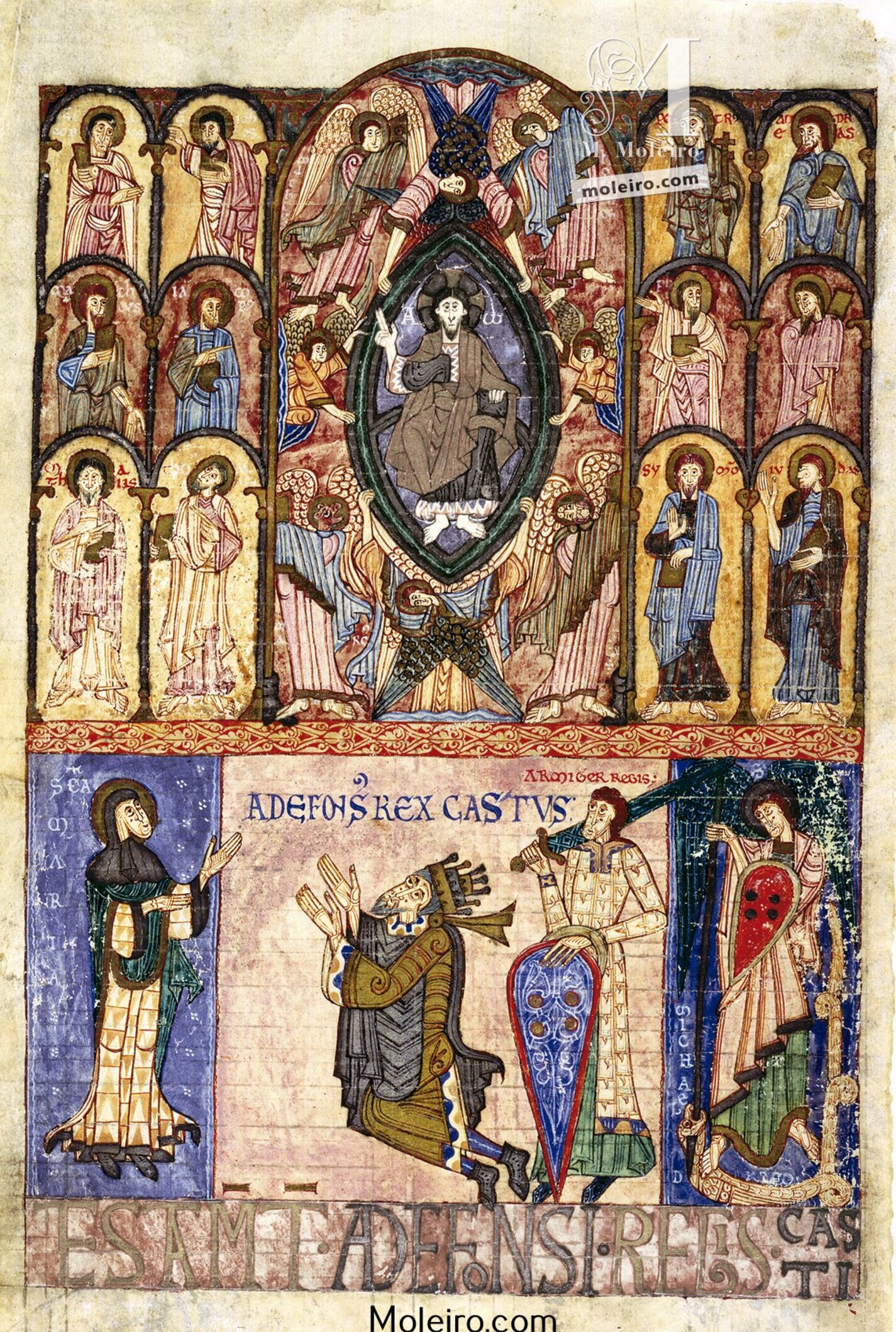This is the most famous miniature of this codex. It is dedicated to Alphonse II, the true founder of the kingdom of Asturias and (most importantly) of Oviedo, which was conceived as the new Toledo. It is also one of the most exceptional images of the collection, because it establishes a relationship between the monarchy and divinity. Near the top, a great Maiestas Domini unfolds; its structure seems to be inspired by Oviedo´s Arca Santa, although more generally is a response to what tends to be a gold or silver façade. But in this case, the arch is a symbol of the kingdom - its most precious possession, of which Alphonse II is no stranger to its movement and settlement. Around the image of God, there are symbols of evangelists with human bodies, angelic wings and the heads of animals, in accordance with a longstanding tradition ingrained in western Christian cultures. The apostles stand below arches at the middle of the image, identified by inscriptions.
The lower part of the image focuses on the figure of the King, whose sincere piety has been compared to that of a monk. He looks up at the celestial vision, wearing all the signs of royalty and accompanied by his ´armiger´, carrier of his weapons and (in this case) personal protector. The choice to have the Virgin and St. Michael at his sides, as protectors and intercessors, is not incidental, but complies with the singular worship he had for them. Although the composition is quite original, there are similarities to miniatures from other, previous cartularies.
The softness of colour which is characteristic of this miniaturist manifests itself again here. They never choose garish colours and only rarely elect to use intense shades. They also use an abundance of gold, because the bishop wanted to create a luxurious manuscript. Some contrasting aspects appear in the artwork: on the one hand, it is deeply Romanesque and European. On the other, it maintains certain stylistic traits from the Early Medieval tradition; most notably, in the folds of the mantles.
